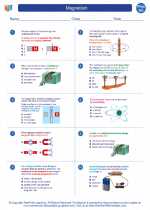Glacial Activity
Glacial activity refers to the various processes and features associated with the movement and melting of glaciers. Glaciers are large bodies of ice that flow under their own weight, shaping the landscape as they move. Glacial activity has a significant impact on landforms, erosion, and deposition, and understanding these processes is important in the field of geology and environmental science.
Formation of Glaciers
Glaciers form in areas where the snowfall exceeds the snowmelt over many years, leading to the accumulation and compression of snow into ice. Over time, the weight of the accumulating snow and ice causes the lower layers to recrystallize and form solid ice. This process eventually leads to the formation of glaciers.
Movement of Glaciers
Glaciers move due to the force of gravity and the internal deformation of ice. The movement of glaciers can be described as a slow but constant flow of ice downhill. This movement is influenced by factors such as the slope of the terrain, the temperature, and the presence of meltwater at the base of the glacier.
Erosional Processes
Glaciers are powerful agents of erosion, shaping the landscape through processes such as plucking, abrasion, and quarrying. Plucking occurs when the glacier's movement causes it to pick up rocks and sediments from the bedrock, while abrasion refers to the grinding and polishing of the underlying rock surfaces by the debris embedded in the ice. Quarrying involves the fracturing and removal of rock fragments by the glacier.
Depositional Processes
As glaciers move and melt, they deposit the materials they have eroded. This process leads to the formation of various landforms such as moraines, drumlins, and eskers. Moraines are accumulations of till (unsorted glacial debris) that can be found along the sides or front of a glacier. Drumlins are elongated hills of glacial debris that indicate the direction of glacier movement. Eskers are long, winding ridges of sediment deposited by streams flowing within, on, or beneath a glacier.
Effects on Landscapes
Glacial activity has a profound impact on landscapes, shaping valleys, carving out fjords, and creating unique landforms such as cirques, aretes, and U-shaped valleys. Understanding these landforms and their formation processes is essential in interpreting the geological history of a region.
Study Guide
- Describe the formation process of glaciers.
- Explain the factors influencing the movement of glaciers.
- Discuss the erosional processes associated with glacial activity.
- Identify and describe the depositional landforms created by glaciers.
- Examine the impact of glacial activity on landscapes and geological features.
Additional Resources:
- National Geographic - Glacier
- The Geological Society - Glacial Landforms



